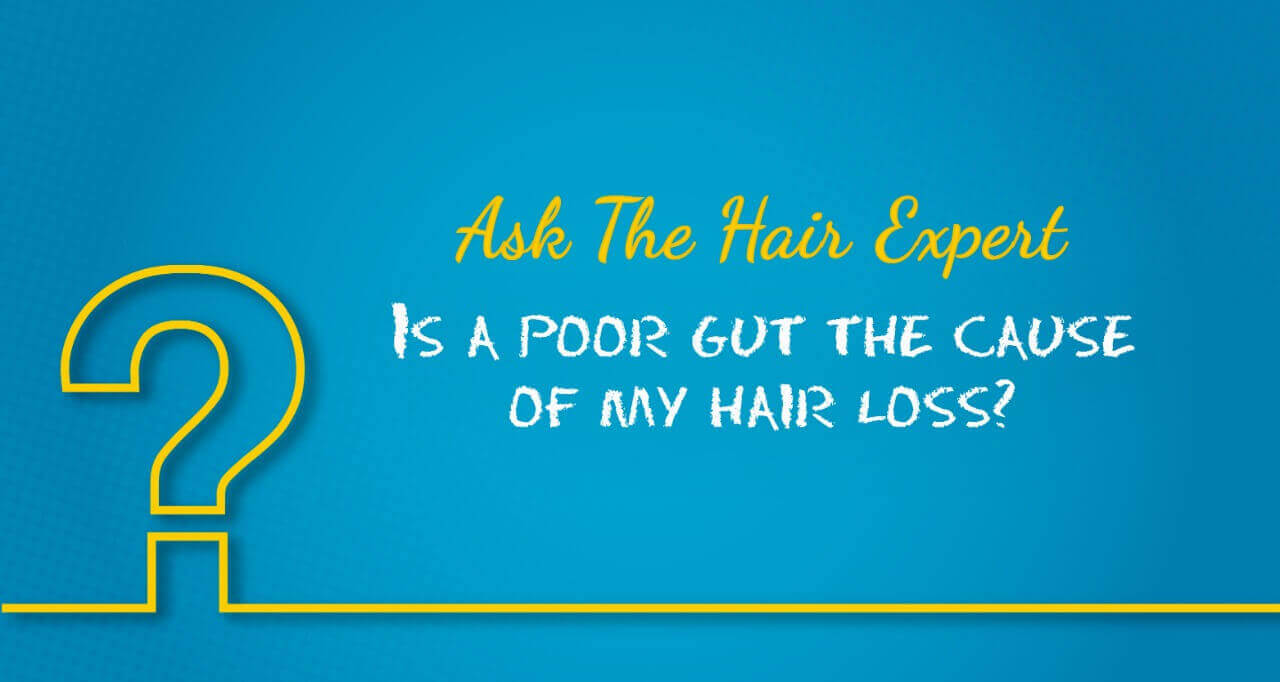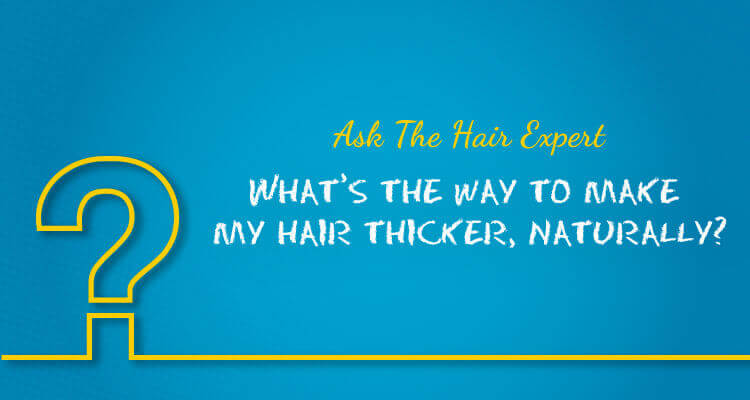Tugging at hair knots with a comb, frowning and fretting… Even more frustrating, as you pull the comb out and see a thick bunch of hair strands caught in it. Common sights and thoughts?
As common a sight or experience as it may be, it is something that needn’t be so disturbing. Unfortunately, when this happens, you tend to resign to it as a daily activity and not look at it as a problem to be tackled. Now, unless you recognize it as a problem, how do you solve it?
Hair gets tangled easily when it is in a damaged state. And sadly, in the process of detangling, you damage it even more. Constant detangling can sometimes do more damage than the process of tangling!
This topic comes up for discussion very often during our clinic consultations. We hence thought it best to address it here on this platform, to give out some clarity across!
So here we are, once again, with our ‘Ask the Hair Expert’ series; this time to address this common hair hazard! We will help you understand why your hair gets tangled in the first place, and how to deal with it. And as always, we will also give out some handy tips to help avoid tangling and hair damage.
You asked: “Why does my hair get so tangled all the time? What causes tangles? How can I prevent hair fall from this tangle-mess?”
Here’s the answer from the Hair Experts.
Hair tangles easily when it’s dry and damaged. And leads to further damage as you pull at it to detangle it!
Some precautions. Some TLC for your hair. And a periodic trip to your Trichologist’s clinic!
Do this, and your hair will be strong and healthy. And not a knotted mess!
To begin with, let’s discuss the most common causes of hair tangling, then speak about the best ways to detangle your hair and how to avoid them as much as possible!
Why does hair tangle?
It’s crystal clear that no one…absolutely no one…likes to have a head full of tangled hair. It’s perhaps one of the reasons why many opt for a short hairdo! ‘Cos it’s more ‘manageable’. But if you understand the root of the issue, you can manage hair of any length! Damaged hair and tangles aren’t necessarily length/style specific!
As mentioned above hair tangles more when the cuticle is damaged and open. The cuticle, outermost layer of your hair, should be smooth and closed. This is its healthy state. The cuticle is supposed to be flat and smooth for it to be healthy, look healthy, shiny and overall have a better body. They are meant to be down smooth, and pointing down in the same direction, like roof tiles! Your hair looks alive and bouncy when your cuticle is smooth & healthy.
When hair is dry and damaged, the cuticle is raised and remains open. These open layers get snagged up with each other, causing tangles and knots in your hair. The more damaged the cuticle, the worse the tangles!
Here are the most common relatable causes of damaged cuticles and hair tangles.
- Overexposure to heatMost styling equipment work on electric heat. Heat is applied on the hair shaft to make the necessary alterations. This works on the cuticle. Tremendous heat is applied to change hair’s natural shape. Further, a solution containing acid, which can reduce the strong disulfide cysteine bond to make the hair permeable, is used to break the bonds in hair’s keratin structure. There is considerable damage to hair in the process. Hair becomes dry, damaged and prone to tangles and breakage. Do read our blogs on hair structure, and on hairstyling concerns, to understand more about this.
- Chemical treatmentsBleaching, hair dyes and other such products/treatments that use harsh chemicals have to be avoided at best. Such treatments cause chemical degradation of proteins and lead to abrasion of protein layers in your hair. As a result, the strength of the hair fibre is reduced, leading to various problems like dry and rough hair, split ends, dry and itchy scalp, hair breakage, loss of texture and hair loss.
- Improper washing of hairWhen hair is not washed the right way, using the right products at the right frequency, it is prone to all sorts of hair and scalp concerns! Do read our blogs on the importance of proper washing of hair. In most cases we have observed that due to improper practices there is product and residue build-up, leading to damaged hair prone to knotting and breakage.
- Towel-drying harshlyMany have the practice of getting out of a shower and vigorously rubbing the hair and scalp with a towel to dry it. This is strict no. Your hair is most sensitive when it is wet. You need to be as gentle as possible at this point. This will damage the cuticles and leave them open for further damage. Squeezing the water out and pat drying would be the best practice to adopt.
- DehydrationDry hair is most susceptible to tangles. This is a known thing. How does dry out? When you don’t moisturise your hair from the outside, and hydrate it from within, hair becomes dry and dull. Dehydration has am an immediate effect on hair. Do read our blog on the topic to understand this in-depth.
- Harsh weather conditionsMany are occupationally prone to exposure to weather conditions, leading to struggle with dry, dull and lifeless hair. When the hair is not protected and directly exposed to harsh sun, extreme humidity and weather conditions, it impacts the outermost layer, the cuticle, very easily. And when your cuticle is damaged, you can rest assured that it’s going to get knotty and prone to fall.
How to best detangle your hair?
Having spoken on the most common causes, let us give you some advice to deal with the problem at hand. If you are already struggling with constant tangling of hair, these tips will help you tackle the moment. However, now that you know the root causes, you should actively take steps to try to avoid the concern in the future!
- Finger-rake your hairGently rake through your hair with your fingers, detangling it slowly. No comb or brush can quite do this work as gently and effectively as your fingers. Use a comb only once you have the situation a little under control!
- Use wide-toothed combIf you are someone who follows our blogs, you know the importance we attach to using wide-toothed wooden combs. They are the gentlest in your hair shaft, especially if your hair is already damaged. They also help reduce static.
- Use detangling conditionerWhen your hair lacks moisture and hydration is when you face maximum concerns with tangles and knots. It is difficult to detangle it when it dry as a straw. Apply a moisturising/conditioning agent like coconut oil or a detangling conditioner, and work your way through the knots with fingers. Gently ease the strands out of the knots. Only then use a comb.
- Sort out the tips firstAlmost everyone starts combing from the top of the head to the bottom tip while combing to detangle or otherwise. It’s the most natural action. When your hair is badly tangled, work it bottom-up. First, detangle the bottom portion..a few inches up from the tip. Then work your way up and comb. This will help reduce the hair breakage and hair fall.
How to prevent knots?
We do understand that at some point it can become an inevitable thing – tangling of hair. You may be in a hurry, not combed right, or hair simply got caught up in something (especially true for those with long hair!). However, this can be kept at as an accidental/rare occurrence. It needn’t, and shouldn’t be a daily affair.
You will by now have a fair understanding of what you shouldn’t do to avoid tangles. Let us quickly list out the most important ones.
- Oil regularlyOiling is the most nourishing, moisturising hair care routine. One you must do religiously! It’s often looked upon as an old trend that’s uncool. Far from it! Regular oiling can save your hair from getting dry, brittle and damaged! Do read our blog on the topic to understand the significance of oiling!
- Shampoo and ConditioningShampooing, and conditioning. Get this regimen right and keep it up at a frequency that your hair needs. Your trichologist can guide you on the right products to use and also guide you on the needed frequency. This will ensure that your hair is cleaned out of product built-up and such which damage your hair.
- Deep conditionDeep conditioning is highly recommended for you if you have dry, brittle, dull and damaged hair. Also, if you have high porosity hair, then deep conditioning is for you. The focus of such a conditioner is on strengthening your hair.
It is meant to be used maybe once or twice a month, as prescribed by your trichologist. It helps seal those damaged cuticles, repair the split-ends and all that damage caused by heat-styling, frequent hair colouring, harsh weather exposure or careless brushing/hair care. - Exercise caution with hair trendsSome modern hair trends and practices have side-effects that are very damaging to hair and scalp. While we do not advocate that you do not style your hair or colour it, we do recommend that you do with caution. Avoid chemical treatments. Use hair colours only as and when needed, while ensuring that you take parallel steps to ensure that the inevitable damage is kept at bay. This can be taken care of through prescribed tricho treatments. Avoid overuse of styling equipment. You now know the effect of heat applied on hair through such tools.
- Protect your hair when stepping outWear a hat while out in the sun. Oil your hair lightly before you get into the salty waters. Cover your hair before jumping into the swimming pool. If you get wet in the rains, be sure to not let it remain wet for long…different environments, different demands of hair protection! Your cuticles remain protected if you ensure this. Protected they are – lesser the knots.
- Stay hydratedWater is your magic potion. Drink those eight glasses of water or consume water-rich foods to stay clear of dehydration. Your hair needs to be hydrated from within to stay clear of dryness and breakage. Dry, dull, brittle hair prone to knots, split ends and breakage are common features in someone who is not adequately hydrated. Stay hydrated, stay healthy – for your hair and body.
- Tricho treatments to protect from hair damage Haircare and hair problems are deep-rooted in science. Superficial hair spas can perhaps help you feel good, but little do they do to truly impact your hair. In fact, many such DIY kits and salon sessions leave you with dry hair in the long run!To curtail the damage which your hair becomes prone to with exposure to several external factors, get intermittent tricho treatments done. These will help you truly revitalise your hair, keeping them nourished and moisturised. Tricho treatments such as hydrotherapy keep away dryness, add bounce to your hair and give it the nourishment it needs. If you are into hair colouring, taking up tricho treatments to tackle hair colour damage will curtail the impact of hair colours, detoxify and rejuvenate your hair. These are good practices to keep your hair healthy and knot-free.
These are just some tips that are common to all. Now, if you are facing persistent hair or scalp problems, do not hesitate to seek professional help.
How can a Trichologist help you?
Who knows your hair better than a trichologist? Walk-in for a hair consultation with a trichologist to help you understand your hair better, from within. You can then discuss your hair care routine, your diet, the products that you should/shouldn’t use and tricho treatments that can help you protect & maintain your hair in spite of the frequent changes around you as you travel.
Let us remind you that trichologists are not just for people who are facing severe skin infections or needing a hair transplant. They are your go-to professionals for all things ‘hair’! From helping you resolve split ends to tangles, to setting you up on the right track to great healthy hair – they are the Hair Doctors. Mark your calendar with a half-yearly tricho-check to ensure healthy, flaunt-worthy hair.
Keep your hair worries aside and get on with your agenda! You shouldn’t be spending time fretting and fuming over hair knots when life is waiting!
Do reach out to us at any point with your doubts or concerns. We are just a call away!
You can also learn more on the topic via our hair care blogs, and you can also follow our blog sections on hair loss, treatments & solutions, interesting hair trivia and for all things ‘Hair’!
Connect with us on social media on the links below. Do leave your questions & comments, and we will address them all, just as we have done today!



